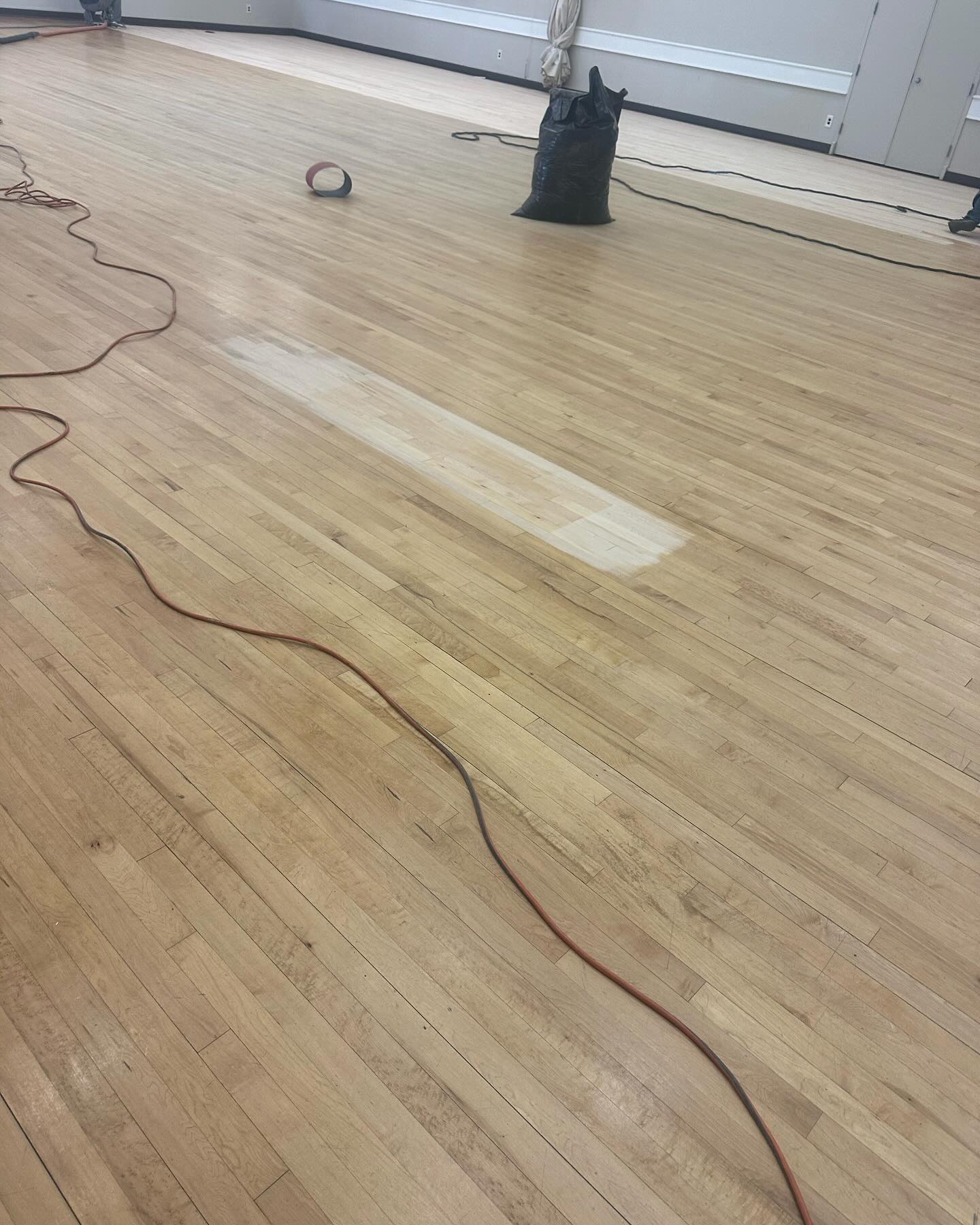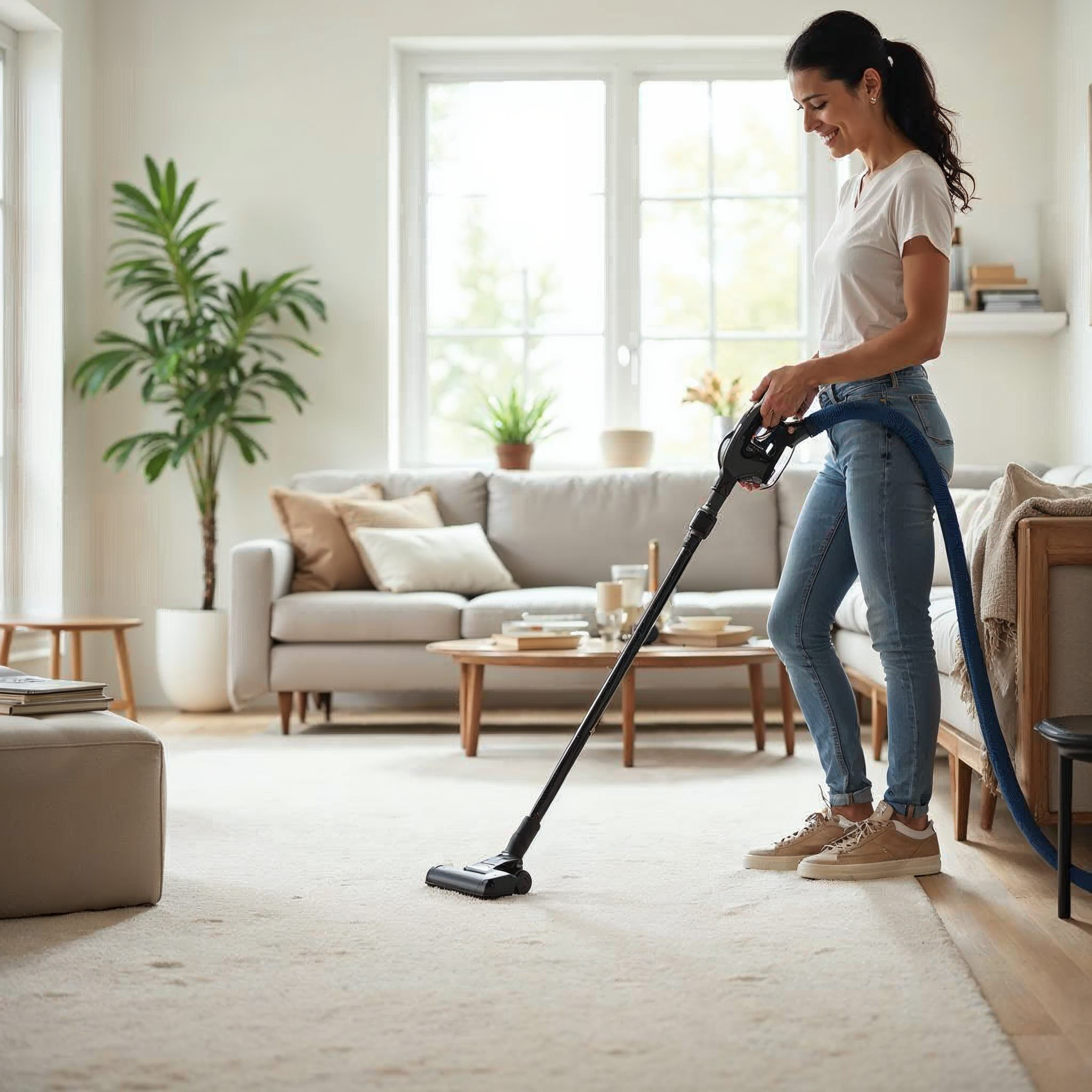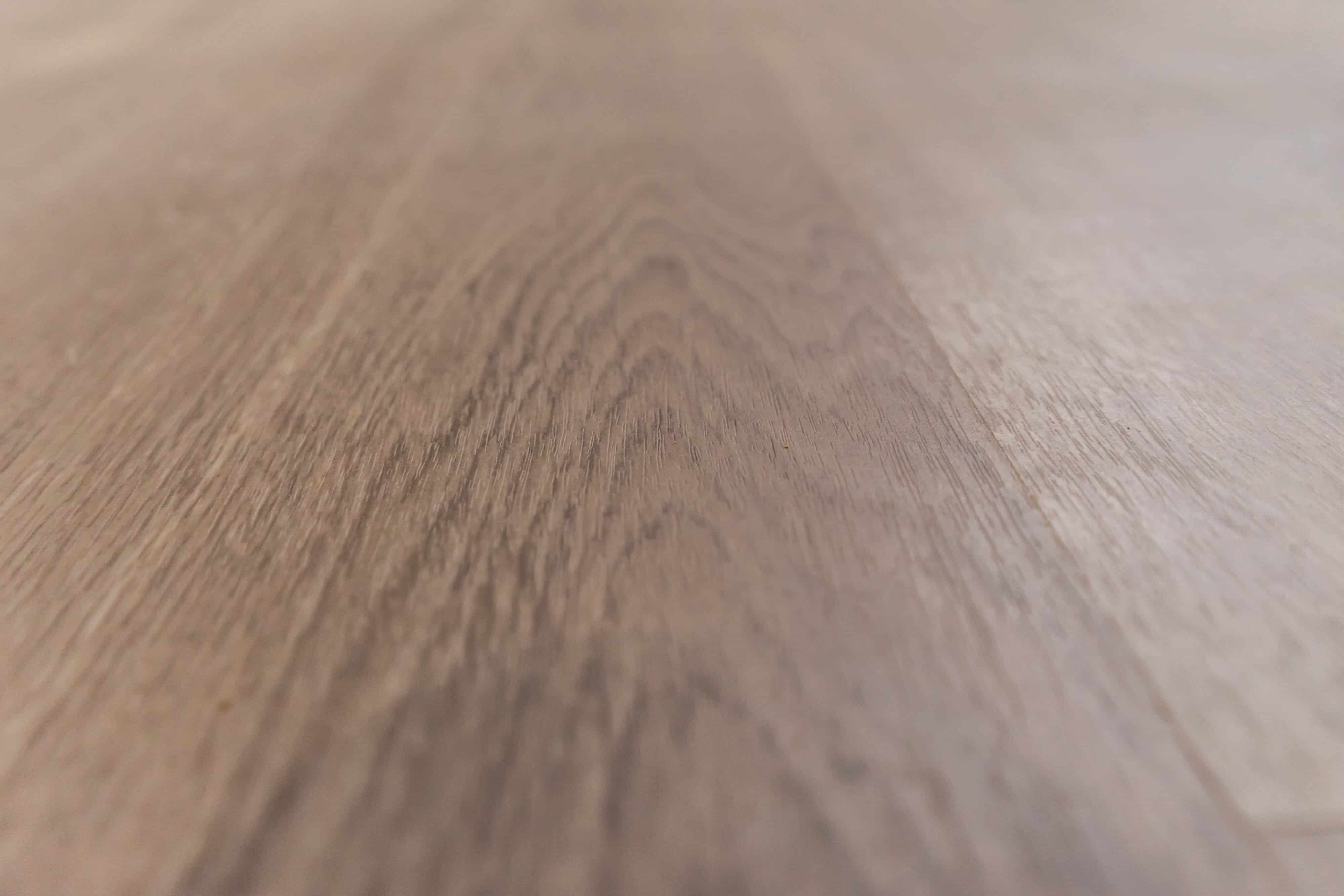Kitchen Flooring That Withstands Maryland’s Busy Lifestyles
Exploring Kitchen LVP and Tile Trends for Maryland Homes
Renovating a kitchen in Maryland involves making choices that stand up to the hustle and bustle of daily life, and selecting the right flooring is paramount. Homeowners are increasingly turning to durable kitchen flooring options like luxury vinyl plank (LVP) and tile, which not only withstand high traffic but also offer waterproof protection against spills and stains. These materials provide an ideal combination of resilience and style, ensuring that the kitchen remains both functional and visually appealing. As modern design trends continue to evolve, LVP and tile emerge as top contenders for those seeking to marry practicality with contemporary aesthetics. This article will guide Maryland homeowners through the latest trends and benefits of kitchen LVP and tile, providing insights into why they are the preferred choices for today’s busy households.## Durable Kitchen Flooring Maryland
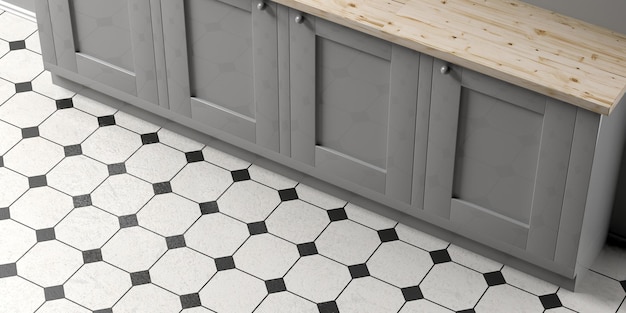
When it comes to kitchen flooring in Maryland, durability is a top priority. This section explores the key factors that contribute to flooring longevity and compares popular options for high-traffic areas.
Understanding Material Durability
Durability in kitchen flooring refers to a material’s ability to withstand daily wear and tear. It encompasses resistance to scratches, dents, stains, and moisture.
Factors affecting durability include the material’s hardness, thickness, and protective coatings. For instance, harder materials like porcelain tile tend to be more scratch-resistant than softer options like vinyl.
Moisture resistance is crucial in kitchens. Waterproof materials like luxury vinyl plank (LVP) and properly sealed tile can prevent water damage and mold growth, extending the life of your floor.
Consider the Janka hardness scale when evaluating wood-look options. This scale measures a material’s resistance to denting and wear, with higher numbers indicating greater durability.
Comparing LVP and Tile Options
LVP and tile are two popular choices for durable kitchen flooring in Maryland. Each offers unique benefits and considerations.
Luxury Vinyl Plank (LVP):
Waterproof
Softer underfoot
Easy to install and replace
Wide range of wood-look designs
Tile (Ceramic or Porcelain):
Extremely durable
Resistant to scratches and stains
Can increase home value
Various styles and patterns available
LVP is often more budget-friendly and easier to install, making it a popular choice for DIY renovators. Tile, while typically more expensive, can last for decades with proper care.
Both options come in a variety of styles to suit different kitchen aesthetics. Your choice may depend on factors like budget, installation preferences, and desired longevity.
Choosing the Right Floor for High-Traffic Areas
For high-traffic kitchen areas in Maryland homes, durability is paramount. Consider these factors when selecting your flooring:
Foot traffic intensity
Presence of pets or children
Frequency of spills and messes
Desired maintenance level
Porcelain tile is often recommended for extremely high-traffic areas due to its scratch and stain resistance. However, LVP can be a great alternative, offering good durability with added comfort underfoot.
For homes with pets, look for flooring with high scratch resistance and easy-to-clean surfaces. Both LVP and tile can work well, but ensure you choose options specifically designed for pet-friendly environments.
Remember that even the most durable flooring requires proper care. Regular cleaning and prompt attention to spills will help extend the life of your kitchen floor, regardless of the material you choose.
Kitchen LVP: A Modern Choice
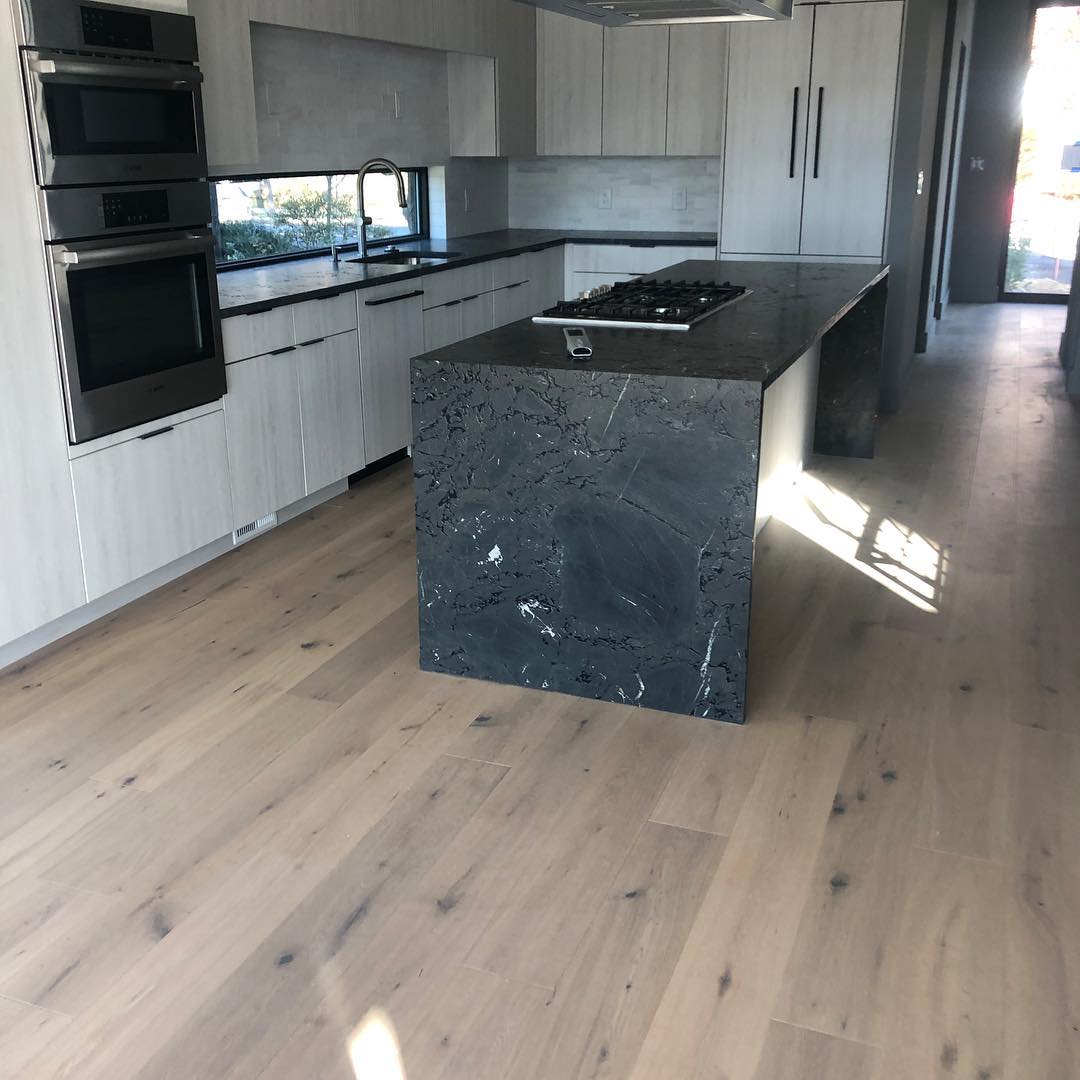
Luxury Vinyl Plank (LVP) has become a go-to option for Maryland homeowners seeking a modern, durable, and versatile kitchen flooring solution. This section delves into the benefits, trends, and practical aspects of LVP in kitchen settings.
Benefits of Luxury Vinyl Plank
Luxury Vinyl Plank offers numerous advantages for Maryland kitchens, making it a popular choice among homeowners.
Durability: LVP is designed to withstand heavy foot traffic, resisting scratches and dents. This makes it ideal for busy kitchens where durability is crucial.
Water Resistance: Most LVP products are 100% waterproof, providing peace of mind in areas prone to spills and splashes. This feature also makes cleaning and maintenance easier.
Comfort: Unlike hard tile surfaces, LVP offers a softer feel underfoot. This can make a significant difference when standing for long periods while cooking or cleaning.
Affordability: Compared to natural hardwood or high-end tile, LVP provides a cost-effective solution without compromising on style or durability.
Easy Installation: Many LVP products feature click-lock systems, allowing for straightforward DIY installation. This can save on professional installation costs.
Design Trends in Kitchen LVP
Kitchen LVP design trends in Maryland are evolving to meet homeowners’ desires for both style and functionality.
Wood-Look Designs: Realistic wood grain patterns remain popular, offering the warmth of hardwood without the maintenance concerns. Oak, maple, and walnut imitations are particularly in demand.
Wide Planks: Larger plank sizes are trending, creating a more spacious feel in kitchens. This style can make smaller kitchens appear larger and more open.
Varied Colors: While traditional wood tones are still popular, there’s a growing interest in gray and whitewashed LVP for a modern, airy look.
Textured Finishes: Embossed or textured surfaces that mimic natural wood grain add depth and authenticity to LVP flooring.
Mixed-Width Planks: Some homeowners are opting for LVP installations that use planks of varying widths, adding visual interest and a custom look to their kitchens.
Installation and Maintenance Tips
Proper installation and maintenance are key to maximizing the lifespan and appearance of your kitchen LVP flooring.
Installation Tips:
Acclimate the LVP to your home’s temperature for at least 48 hours before installation.
Ensure the subfloor is clean, dry, and level before laying the planks.
Leave a small expansion gap around the room’s perimeter to allow for natural expansion and contraction.
Use manufacturer-recommended underlayment for added comfort and sound reduction.
Maintenance Advice:
Sweep or vacuum regularly to remove dirt and debris.
Clean spills promptly to prevent staining or water seepage.
Use a damp mop with a mild cleaner specifically designed for LVP for deeper cleaning.
Avoid harsh chemicals or abrasive cleaning tools that could damage the flooring’s protective layer.
By following these tips, Maryland homeowners can enjoy beautiful, long-lasting LVP flooring in their kitchens for years to come.
Kitchen Tile: Classic and Timeless
Tile flooring remains a classic choice for Maryland kitchens, offering durability, versatility, and timeless appeal. This section explores popular styles, the importance of durability, and maintenance considerations for tile kitchen floors.
Popular Tile Styles for Kitchens
Kitchen tile trends in Maryland showcase a blend of traditional and contemporary styles to suit various home designs.
Large Format Tiles: Oversized tiles, often 12×24 inches or larger, are gaining popularity. They create a sleek, modern look and reduce the number of grout lines, making cleaning easier.
Patterned Tiles: Geometric and Moroccan-inspired patterns add visual interest to kitchen floors. These can serve as a focal point in an otherwise neutral kitchen design.
Wood-Look Tiles: Porcelain tiles that mimic the appearance of hardwood offer the best of both worlds – the warmth of wood with the durability of tile.
Natural Stone Look: Tiles that replicate the appearance of marble, travertine, or slate provide elegance without the high maintenance of natural stone.
Textured Tiles: Slightly textured tiles are becoming more common, offering improved slip resistance without sacrificing style.
The Importance of Tile Durability
Durability is a crucial factor when selecting kitchen tile flooring for Maryland homes.
Wear Resistance: Kitchen floors endure heavy foot traffic, dropped utensils, and potential spills. Durable tiles can withstand these challenges without chipping or cracking.
Moisture Resistance: Kitchens are prone to spills and humidity. Properly sealed tile flooring prevents water penetration, protecting the subfloor from damage.
Stain Resistance: High-quality, well-sealed tiles resist staining from food spills, making them easier to maintain and keep looking new for longer.
Temperature Fluctuations: Durable tiles can withstand the temperature changes common in kitchens without cracking or becoming damaged.
When choosing kitchen tiles, consider the Porcelain Enamel Institute (PEI) rating. Tiles rated PEI 4 or 5 are suitable for residential kitchens, offering excellent durability for daily use.
Maintaining a Tile Kitchen Floor
Proper maintenance is key to preserving the beauty and longevity of tile kitchen floors in Maryland homes.
Daily Care:
Sweep or vacuum regularly to remove loose dirt and debris.
Wipe up spills immediately to prevent staining or slipping hazards.
Use a damp mop with warm water for routine cleaning.
Deep Cleaning:
Use a pH-neutral cleaner specifically designed for your tile type.
Avoid harsh chemicals that can damage grout or tile sealants.
For stubborn stains, create a paste with baking soda and water, apply to the stain, let sit, then rinse thoroughly.
Grout Maintenance:
Seal grout lines annually to prevent staining and moisture penetration.
Clean grout with a soft-bristled brush and a mixture of warm water and mild detergent.
By following these maintenance practices, Maryland homeowners can ensure their tile kitchen floors remain beautiful and functional for years to come.
Waterproof Kitchen Floors MD
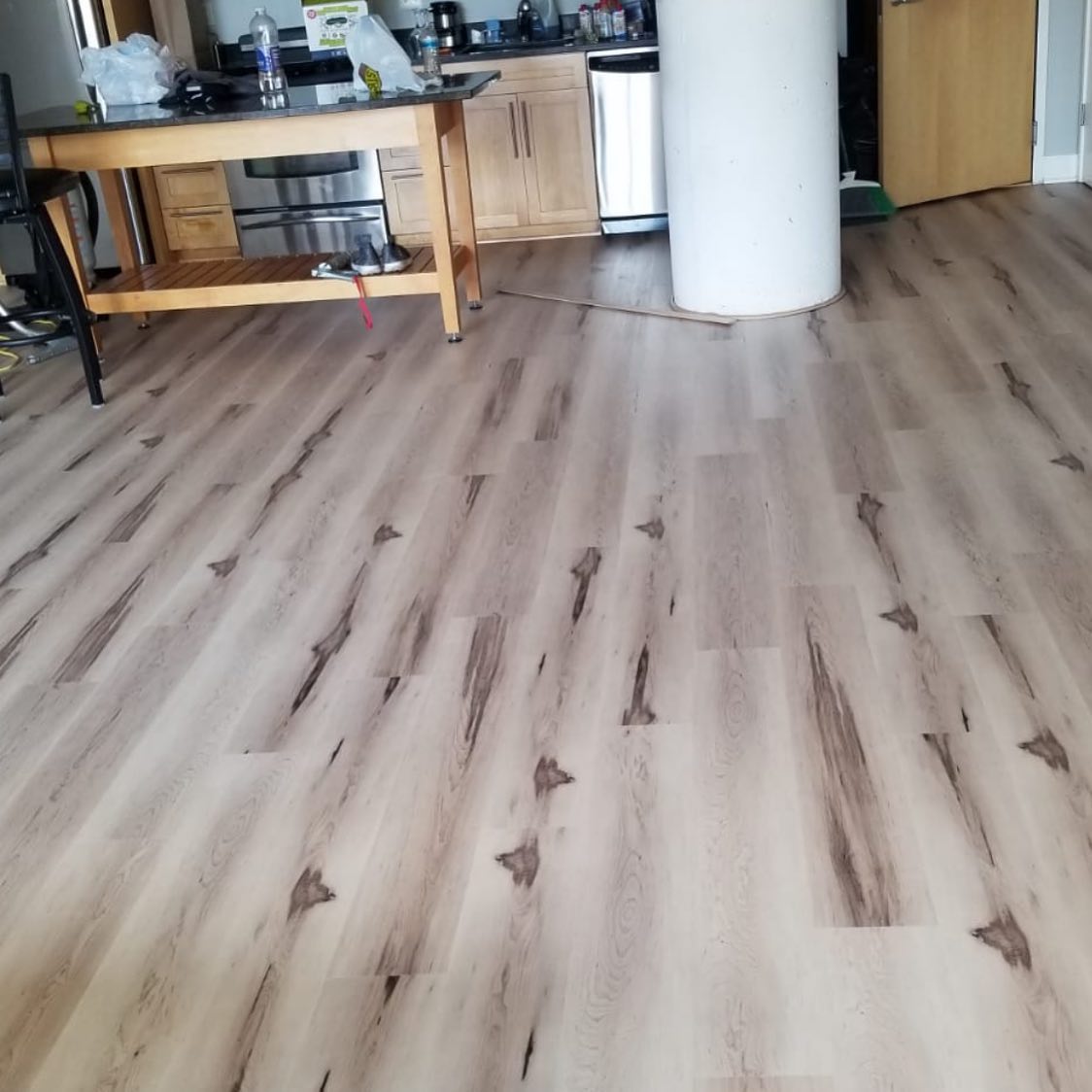
In Maryland’s climate, waterproof kitchen flooring is essential for protecting against spills, humidity, and potential water damage. This section explores the features, options, and protective measures for waterproof kitchen floors.
Key Features of Waterproof Flooring
Waterproof flooring offers crucial benefits for Maryland kitchens, where moisture is a constant concern.
Water Resistance: True waterproof flooring prevents water from penetrating the surface, protecting the subfloor from damage.
Dimensional Stability: Quality waterproof floors maintain their shape and size even when exposed to moisture, preventing warping or buckling.
Mold and Mildew Resistance: By keeping moisture at bay, waterproof flooring helps prevent the growth of mold and mildew, which can be health hazards.
Easy Maintenance: Waterproof surfaces are typically easy to clean and maintain, requiring only regular sweeping and occasional mopping.
When selecting waterproof flooring, look for products with comprehensive warranties that cover water damage, ensuring long-term protection for your kitchen investment.
Best Waterproof Options for Kitchens
Several flooring materials offer excellent waterproof properties for Maryland kitchens:
Luxury Vinyl Plank (LVP): 100% waterproof, durable, and available in a variety of wood-look styles.
Porcelain Tile: Naturally water-resistant and extremely durable, available in countless designs.
Stone-Polymer Composite (SPC): A rigid core vinyl product that’s waterproof and highly stable.
Ceramic Tile: Water-resistant when properly installed and sealed, offering classic appeal.
Sheet Vinyl: Provides a seamless, waterproof surface that’s budget-friendly.
Each option has its unique benefits. Consider factors like style preferences, durability needs, and budget when making your selection.
Protecting Floors from Water Damage
Even with waterproof flooring, taking preventive measures can extend the life of your kitchen floor:
Install water barriers in areas prone to splashes, like around the sink and dishwasher.
Use mats in high-traffic areas and near water sources to catch drips and spills.
Regularly check and maintain plumbing fixtures to prevent leaks.
Clean spills promptly, even on waterproof surfaces, to prevent slip hazards.
For tile floors, ensure grout lines are properly sealed to prevent water penetration. Reapply sealant annually or as recommended by the manufacturer.
Remember, while these floors are waterproof, standing water should still be avoided. Promptly address any major spills or flooding to prevent damage to surrounding areas.
High-Traffic Kitchen Flooring Solutions
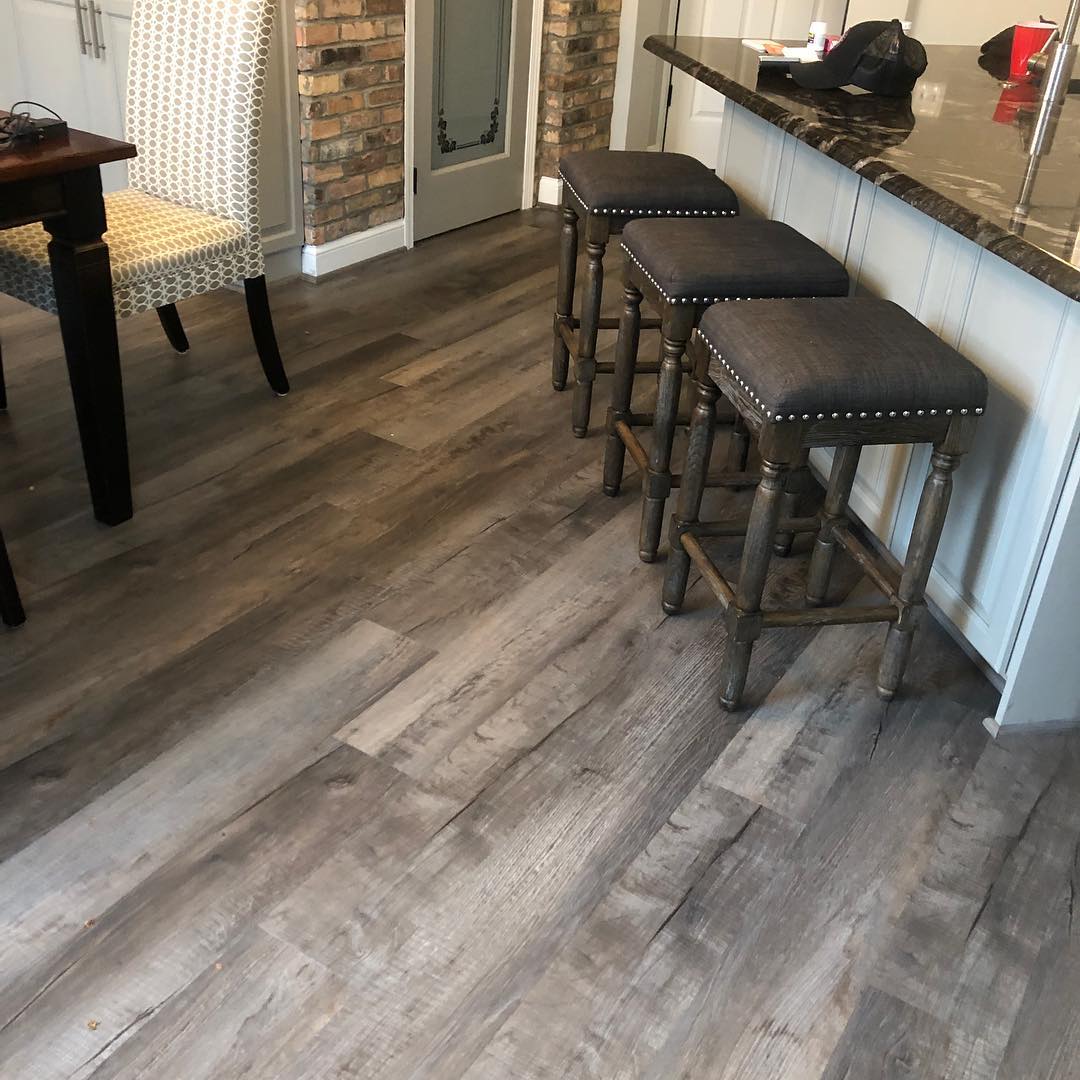
Maryland kitchens often serve as the heart of the home, enduring constant foot traffic. This section focuses on selecting durable flooring that can withstand heavy use while maintaining its aesthetic appeal.
Selecting Floors for Busy Kitchens
Choosing the right flooring for a high-traffic kitchen involves balancing durability, maintenance, and style.
Durability Factors:
Scratch resistance
Impact resistance
Stain resistance
Moisture resistance
Consider the Wear Layer for LVP or the PEI rating for tile. Higher numbers indicate better durability for high-traffic areas.
Material Options:
Porcelain Tile: Extremely durable and water-resistant
Luxury Vinyl Plank: Resilient and waterproof
Engineered Hardwood: More stable than solid wood in varying humidity
Each option offers unique benefits. Assess your specific needs, such as comfort underfoot, noise reduction, and ease of maintenance, when making your selection.
Remember, even the most durable flooring requires proper care. Regular cleaning and prompt attention to spills will help extend the life of your kitchen floor.
Balancing Style and Functionality
Creating a kitchen that’s both beautiful and practical is key for Maryland homeowners.
Color Considerations:
Lighter colors can make small kitchens feel larger but may show dirt more easily.
Darker colors or patterns can help hide dirt and wear in high-traffic areas.
Texture:
Slightly textured surfaces can provide better slip resistance.
Smooth surfaces are easier to clean but may be more slippery when wet.
Pattern:
Busy patterns can help camouflage dirt and wear between cleanings.
Simple patterns or solid colors offer a clean, modern look but may show imperfections more readily.
When selecting your flooring, bring samples home to see how they look in your kitchen’s lighting and with your cabinetry and countertops.
Consider how the flooring will transition to adjacent rooms. A cohesive flow can make your home feel more spacious and well-designed.
Testimonials from Maryland Homeowners
Real experiences from Maryland homeowners offer valuable insights into high-traffic kitchen flooring choices.
“We installed porcelain tile in our kitchen two years ago, and it still looks brand new despite our three kids and dog. It’s been incredibly easy to maintain.” – Sarah T., Bethesda
“LVP has been a game-changer in our busy kitchen. It’s comfortable underfoot, which is great when I’m cooking, and it’s stood up to all the spills and drops without a scratch.” – Mike R., Baltimore
Key takeaways from homeowner experiences:
Durability is the top priority for most Maryland families.
Easy maintenance is highly valued in busy households.
Comfort underfoot is an important factor, especially for those who spend a lot of time in the kitchen.
Water resistance is crucial for peace of mind.
Many homeowners report satisfaction with both tile and LVP options, citing different benefits for each. Your choice may depend on your specific needs and preferences.
Remember to consider factors like installation costs, longevity, and potential impact on home resale value when making your decision.
Fill out the form below and an AG Construction representative will contact you soon.
Contact Us Today


Whether you own a home or business, we’re your single source for complete flooring installation services! Our comprehensive services include:
- Hardwood staining, sanding, refinishing, restoration, and more!
- Carpet removal and installation
- Vinyl luxury plank replacement and installation
- Vinyl tile and COREtec installation
- And more!


